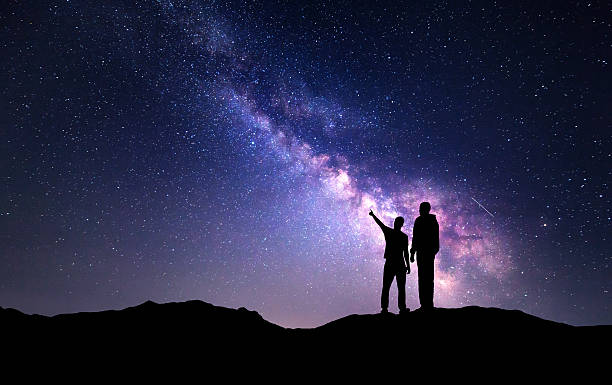Astro-Tourism: Exploring the Cosmos from Earth's Darkest Corners
Imagine gazing up at a sky so dark and clear that the Milky Way appears as a luminous river of stars overhead. Welcome to the world of astro-tourism, a rapidly growing niche that combines the thrill of travel with the wonder of celestial observation. This unique form of exploration takes adventurers to some of the most remote and pristine locations on Earth, all in pursuit of unparalleled views of the cosmos. As light pollution increasingly obscures our view of the night sky in urban areas, astro-tourism offers a chance to reconnect with the universe and experience the awe-inspiring beauty of the stars.

Recognizing the value of dark skies, the International Dark-Sky Association (IDA) was founded in 1988 to combat light pollution and preserve areas with exceptional stargazing conditions. This organization played a crucial role in establishing the first International Dark Sky Parks, which became popular destinations for astronomy enthusiasts and casual stargazers alike.
Dark Sky Destinations: Where to Find the Best Stargazing
Astro-tourism has led to the identification and protection of numerous dark sky locations around the globe. These areas are characterized by minimal light pollution, clear atmospheric conditions, and often high elevation. Some of the most renowned dark sky destinations include:
-
Atacama Desert, Chile: Known for its exceptionally dry climate and high altitude, the Atacama Desert offers some of the clearest night skies on Earth.
-
NamibRand Nature Reserve, Namibia: This African reserve was the first location in Africa to be designated as an International Dark Sky Reserve.
-
Aoraki Mackenzie International Dark Sky Reserve, New Zealand: Covering over 4,300 square kilometers, this reserve offers stunning views of the southern night sky.
-
Natural Bridges National Monument, Utah, USA: The first International Dark Sky Park, Natural Bridges combines stunning rock formations with pristine night skies.
-
Pic du Midi, France: This high-altitude observatory in the Pyrenees Mountains offers visitors the chance to spend the night above the clouds, surrounded by stars.
The Impact of Astro-Tourism on Local Communities
The rise of astro-tourism has had a significant positive impact on many remote and rural communities. Areas that previously struggled to attract visitors are now seeing an influx of stargazers eager to experience dark skies. This has led to the development of new tourism infrastructure, including specialized accommodations, guided tours, and educational programs.
For example, the small town of Coonabarabran in New South Wales, Australia, has branded itself as the “Astronomy Capital of Australia.” The nearby Siding Spring Observatory and the clear, dark skies of the surrounding Warrumbungle National Park have turned this once-quiet rural community into a thriving hub for astronomy enthusiasts.
Technological Advancements Enhancing the Astro-Tourism Experience
While the core appeal of astro-tourism lies in the natural beauty of the night sky, technological advancements have greatly enhanced the experience for many travelers. Some key innovations include:
-
High-powered telescopes: Many dark sky destinations now offer access to professional-grade telescopes, allowing visitors to observe distant galaxies, nebulae, and planets in stunning detail.
-
Astrophotography equipment: Specialized cameras and mounts enable travelers to capture breathtaking images of the night sky, even with minimal photography experience.
-
Planetarium software: Mobile apps and computer programs can help identify celestial objects and provide real-time information about astronomical events.
-
Virtual reality experiences: Some observatories now offer VR simulations that allow visitors to explore the cosmos in unprecedented ways, complementing their real-world observations.
The Future of Astro-Tourism: Challenges and Opportunities
As astro-tourism continues to grow in popularity, it faces both challenges and opportunities. One significant concern is the potential impact of increased tourism on fragile dark sky environments. Balancing accessibility with preservation will be crucial for the long-term sustainability of these destinations.
Climate change also poses a threat to astro-tourism, as changing weather patterns and increased atmospheric turbulence can affect the visibility of celestial objects. However, this challenge may also present an opportunity for astro-tourism to raise awareness about environmental issues and promote conservation efforts.
Looking ahead, the future of astro-tourism appears bright. The growing interest in space exploration, coupled with advancements in astronomy and space technology, is likely to fuel continued fascination with the night sky. As more people seek out these awe-inspiring experiences, astro-tourism has the potential to foster a greater appreciation for our place in the universe and inspire the next generation of astronomers and space enthusiasts.
Stargazer’s Guide: Essential Tips for Astro-Tourists
• Plan your visit around the lunar calendar; new moon periods offer the darkest skies
• Bring warm clothing, even in summer; temperatures can drop significantly at night
• Allow time for your eyes to adjust to the darkness; it can take up to 30 minutes for full dark adaptation
• Use red-light flashlights to preserve your night vision
• Consider joining a guided tour for access to expert knowledge and equipment
• Check local weather forecasts for cloud cover and visibility conditions
• Familiarize yourself with basic constellations and celestial objects before your trip
• Respect local regulations and guidelines to help preserve dark sky areas
As we continue to explore the vastness of space from our terrestrial vantage point, astro-tourism offers a unique opportunity to connect with the cosmos and gain a new perspective on our place in the universe. By venturing to Earth’s darkest corners, we not only witness the breathtaking beauty of the night sky but also contribute to the preservation of these invaluable natural wonders for future generations.





